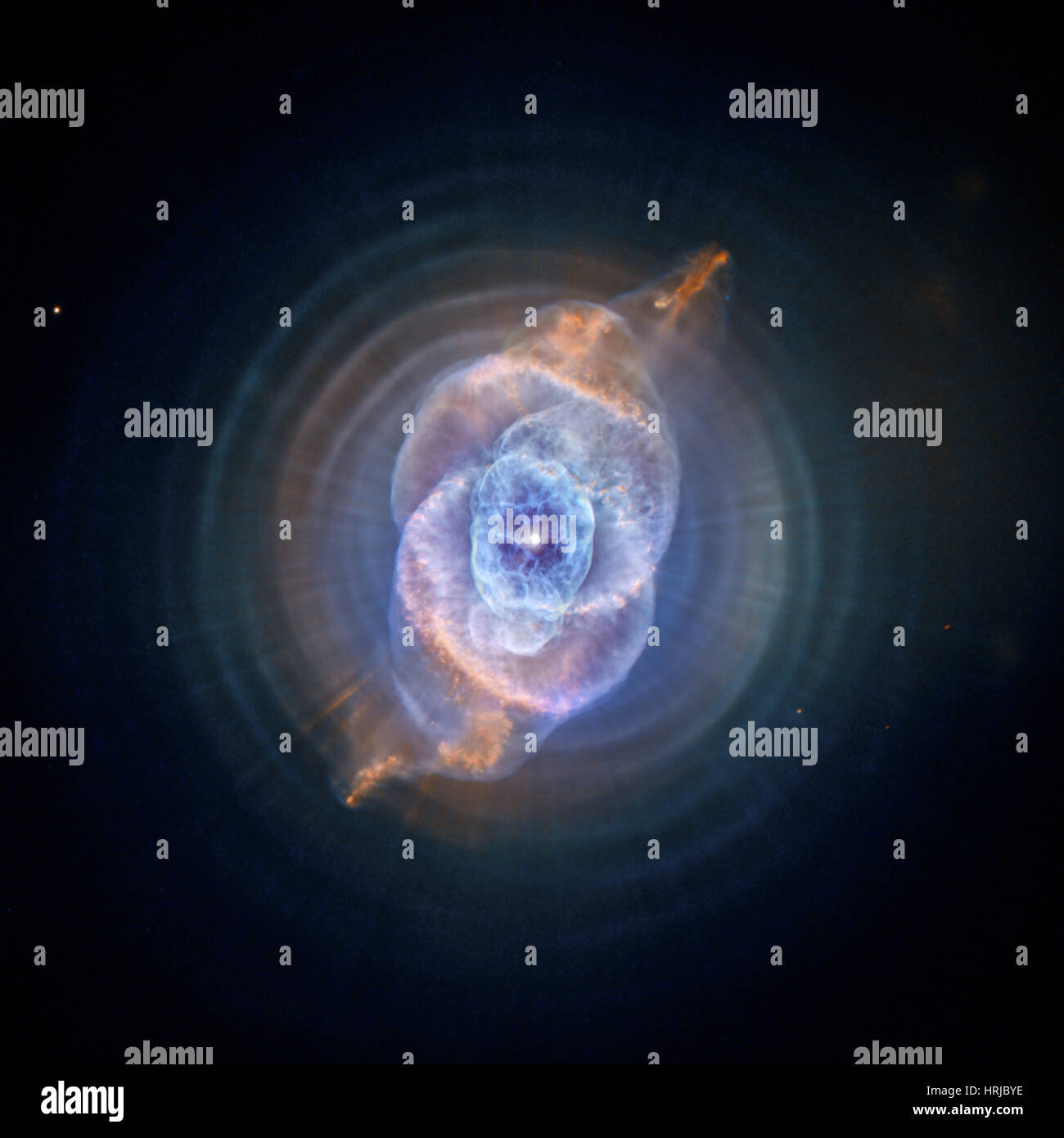NGC 6543, Cat's Eye Nebula, Optical

Image details
Contributor:
Science History Images / Alamy Stock PhotoImage ID:
HRJBYEFile size:
37.1 MB (639.1 KB Compressed download)Releases:
Model - no | Property - noDo I need a release?Dimensions:
3600 x 3600 px | 30.5 x 30.5 cm | 12 x 12 inches | 300dpiPhotographer:
Photo ResearchersMore information:
This image could have imperfections as it’s either historical or reportage.
The Cat's Eye Nebula or NGC 6543, is a planetary nebula in the constellation of Draco. Structurally, it is one of the most complex nebulae known, with high-resolution Hubble Space Telescope observations revealing remarkable structures such as knots, jets, bubbles and sinewy arc-like features. In the center of the Cat's Eye there is a bright and hot star; around 1000 years ago this star lost its outer envelope, producing the nebula. X-ray emission from Chandra is colored purple and optical emission from the Hubble Space Telescope is colored red, green and blue. A planetary nebula is a phase of stellar evolution that the sun should experience several billion years from now, when it expands to become a red giant and then sheds most of its outer layers, leaving behind a hot core that contracts to form a dense white dwarf star. A wind from the hot core rams into the ejected atmosphere, creating the shell-like filamentary structures seen with optical telescopes. The diffuse X-ray emission is caused by shock waves as the wind collides with the ejected atmosphere. The properties of the X-ray point sources in the center of about half of the planetary nebulas suggest that many central stars responsible for ejecting planetary nebulas have companion stars. Release date October 10, 2012.